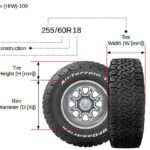Slide 1. Introduction.
The class develops what the General Vehicle Regulations are and what they regulate, as well as their implications for fleet management.
Slide 2. General Vehicle Regulations.
- What do the General Vehicle Regulations regulate?.
The General Vehicle Regulations are a technical and legal manual that establishes the characteristics that a vehicle must meet in order to be driven on public roads.
The regulations establish provisions covering everything from braking and lighting systems to pollutant emissions. These regulations affect any person or company that owns, drives, or manufactures a car. They are an essential component of road safety and sustainability.
Each country has its own General Vehicle Regulations. Below are the regulations of the European Union.
The main aspects regulated by the European Union's General Vehicle Regulations are as follows.
- Mechanical safety and mandatory systems.
The regulations require all vehicles to have effective braking systems. Current regulations establish minimum response and effectiveness parameters, thus ensuring that any vehicle can stop safely.
In addition, it regulates the installation and approval of components such as ABS brakes, brake assist systems, and electronic stability control (ESP), among others.
- Structural design and occupant protection.
The vehicle structure is subject to specific regulations. It is imperative that it not only functions, but also provides protection. Therefore, the regulations require the implementation of programmed deformation zones, the use of resistant materials in the manufacture of car bodies, and the inclusion of passive safety systems, such as airbags and three-point seat belts. All of this is designed to increase the chances of escaping unharmed in the event of an accident.
- Environmental standards and lighting.
- Emissions control and sustainability.
The General Vehicle Regulations establish clear limits for pollutant emissions. Thanks to the implementation of control systems, such as particle filters and catalytic converters, a significant reduction in the environmental impact associated with road traffic has been achieved. In addition, it complies with the most rigorous European regulations, such as the Euro 6 and upcoming Euro 7 standards, and continues to evolve towards cleaner technologies.
- Regulated lighting to prevent accidents.
It is important to note that headlights, turn signals, and brake lights must meet specific requirements. Various parameters, such as the type of light, its intensity, color, and behavior, are meticulously monitored. All measures have been implemented with the purpose of preventing glare and ensuring the visibility of the vehicle at all times.
- Vehicle approvals and modifications.
- Approval of new models.
Before a new car is available on the market, it must undergo a rigorous technical approval process. This ensures that the model complies with all safety, emissions, design, and equipment requirements. Features such as automatic braking, blind spot sensors, and parking aids are already covered by many of these current requirements.
- Vehicle classification.
Defines the different categories of vehicles and their characteristics.
- Documentation.
Establishes the documents that vehicles must carry, such as the registration certificate and the MOT card.
The MOT test assesses several aspects of a vehicle to ensure it's safe roadworthy and exhaust emissions.
- Registration.
Contains the rules on registration, change of ownership, deregistration, and temporary driving permits.
- License plates.
Establishes the technical specifications and content of license plates, including the prohibition of decorations or advertising.
- Changes after registration.
If an electric motor is installed in a classic vehicle or the suspension is modified, it will be necessary to obtain the corresponding administrative authorization and pass a technical inspection. These modifications must be duly notified, and the vehicle must continue to comply with the required standards. The main objective of these improvements is to ensure that they do not compromise safety or violate current legislation.
- Regulations that evolve over time.
The General Vehicle Regulations are not a static document. They evolve over time to adapt to technological innovations and current environmental challenges. Without them, driving on the road would be chaotic and dangerous.
When I was a fleet manager, there was a change in the regulations for rearview mirrors on certain trucks, and all the mirrors had to be changed to comply with the new legislation.
- Implications for fleet management.
The main consequence of not complying with the General Vehicle Regulations is financial penalties, failure to pass the MOT, and even immobilization of the vehicle, with the cost and time that the vehicle is unavailable for service.
It is important to be aware of the modifications and changes that occur in the General Vehicle Regulations over time and how they affect the vehicles in the fleet.
As this is a legal and regulatory issue, it is advisable to hire an external company specializing in this area to notify us when there is a new regulation or modification that affects the vehicles in the fleet.
Although this is a very important issue, fleet managers do not have to devote much time to it, as there are other more important fleet management activities.
If your fleet is very large, you can have an employee perform this task.
If you are planning to modify, install, or change anything in your vehicle, you must consult the Vehicle Modification Manual. This manual is an essential reference document, as it provides detailed guidance on the procedures and descriptions required to legalize any changes made to a vehicle.
Its main purpose is to ensure that all modifications comply with current safety standards and are legally recognized. The manual classifies modifications using specific codes and provides a comprehensive list of the steps and documents required for each type of modification.
Slide 3. Thank you for your time.
The class has developed what the General Vehicle Regulations are and what they regulate, as well as their implications for fleet management, see you soon.
Download the audio




















